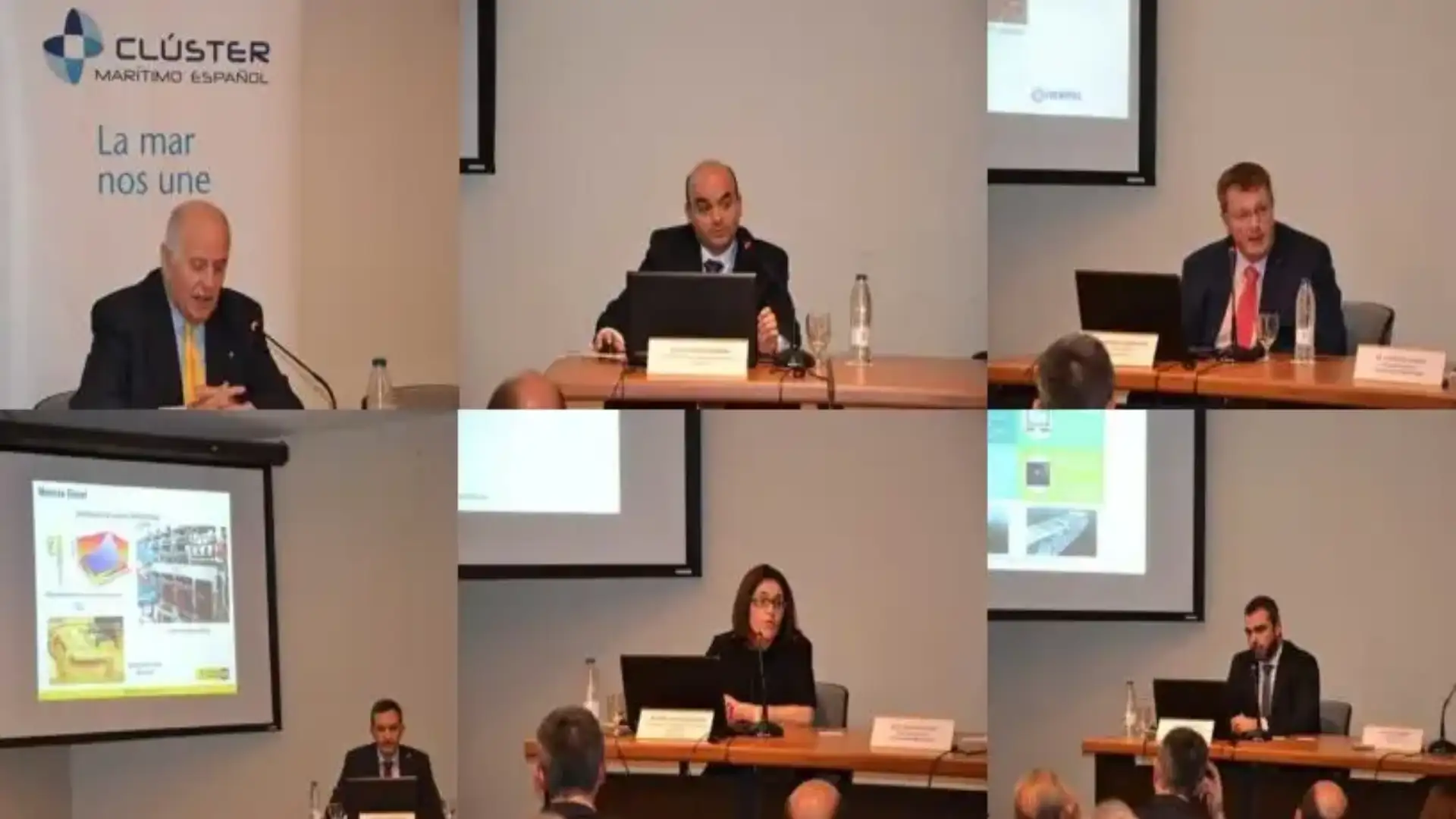
New "Meeting with the Sea" organized by the Spanish Maritime Cluster
New "Meeting with the Sea" organized by the Spanish Maritime Cluster

The Spanish Maritime Cluster (CME) held a new Meeting with the Sea under the title "Marine Energy Efficiency." The event was attended by companies representing various fields of the naval sector, which presented the latest developments and regulations applicable in the maritime environment, in order to make it energy more efficient
The Spanish Maritime Cluster (CME) held a new Meeting with the Sea under the title "Marine Energy Efficiency." The event was attended by companies representing various fields of the naval sector, which presented the latest developments and regulations applicable in the maritime environment, in order to make it energy more efficient. Thus, following the welcome of Federico Esteve, president of honor of the CME, he opened the meeting José Luis Candia, commercial director of the Lledó Group. In his intervention, Candia presented the benefits that LED technology offers today to achieve a more efficient performance of light resources, both outside and inside. Among these benefits was a greater efficiency of the lighting system, an increase in the life of the light source, a greater control of the light and the colors generated, a safer technology without toxic substances, and a greater robustness, supporting vibrations, blows and low temperatures.
Tests
Arturo Piñeyro, head of the CEHIPAR experimental facility area, then spoke about the importance of hydrodynamic tests in setting the energy efficiency index for each ship. In this way, Piñeyro referred to the policy developments that began in 2011 and that in its course has set ambitious emission reduction targets. It further noted that in this process of meeting the established emission levels, CEHIPAR contributes to the constructive process of the ship through the development of a technical file that results in an energy efficiency index of a particular vessel, subsequently transferred to the classification company.
Technical innovations
To discuss the technical innovations that are taking place in the maritime field, which contribute to improving the energy efficiency of ships, Gerardo Sanmartin, delegate of Hempel Paints in A Coruña, was present at the discussion table. During his intervention, he presented one of the main developments that the company has implemented to improve the energy efficiency of the ships, from the point of view of the coating and the fight against corrosion, Hempagard. It is a product that is created from the mixture of hydrogel and biocidal products, which results in the hull of the ship and the water uniting into a single body, thus avoiding the adhesion of marine fauna that may damage the ship. This effect provides a fuel saving of 3.5% to 8.6%, and allows ships to navigate in any type of water, making them more efficient and versatile. Another aspect that is most taken into account when controlling a ship's energy efficiency indices is its propulsion system. The meeting was therefore attended by Pablo Cantero, Marine Business Development Manager of Barloworld Finanzauto, who made a brief review of the evolution of marine engines. In his presentation, Cantero highlighted the influence of established regulations on the development of marine propulsion systems. As Barloworld Finanzauto's representative explained, it is important to consider aspects such as the shape or profile of the ship to implement a particular propulsion system. "The aim is increasingly to incorporate efficient systems, which are adapted to existing rules." Cantero concluded his intervention by making it clear that, despite the progress made, the future is in the propulsion by Liquefied Natural Gas and the information technology revolution. fully monitored and automated vessels, in which a great deal of data will be managed. The key will be to transform these data into information.
Applied legislation
After putting on the table the new advances in light, testing, coatings and propulsion, Montserrat Espin, responsible for machines, electricity and security of Bureau Veritas, gave the debate his vision of the new regulations governing the maritime environment for the monitoring and reduction of emissions. During his exhibition he highlighted the leading role of the Liquid Natural Gas, as an efficient source of ship feeding, as well as the national and international projects that already incorporate this type of fuel, in which Bureau Veritas has participated. One example is the ship of Baleària, Abel Matutes.
New projects
In conclusion, José Poblet, technical consultant for Baleària and Jesús Blanco, technical for the management of Baleària maintenance systems, took the floor. Both made known the latest project in which the company has embarked and which has meant for it and for the naval sector, in general, a completely new concept. After years of study and development, Baleària has been adapting its ships by and for the current situation, based on the concept of eco-efficiency and introducing improvements in aspects such as the rating and the load ratio. Thus, the new ship of Baleària is a more comfortable boat, with a greater load capacity and equipped with LNG systems and solar plates, making it more efficient. In addition, as the rapporteurs indicated, this ship incorporates new intelligent technologies, which make it a smart one. In this way, the company aims to obtain objective data from the ship, on which to act, to make it as efficient as possible.
© 2024 Nautica Digital Europe - www.nauticadigital.eu











